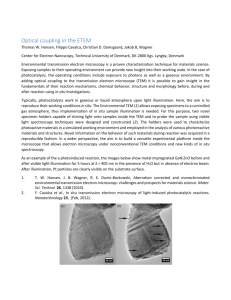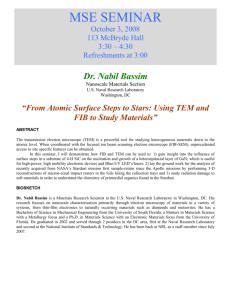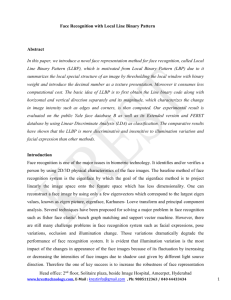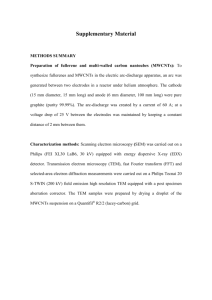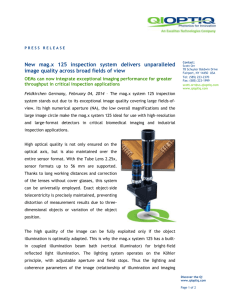Environmental TEM Studies of Catalyst Nanoparticles
advertisement
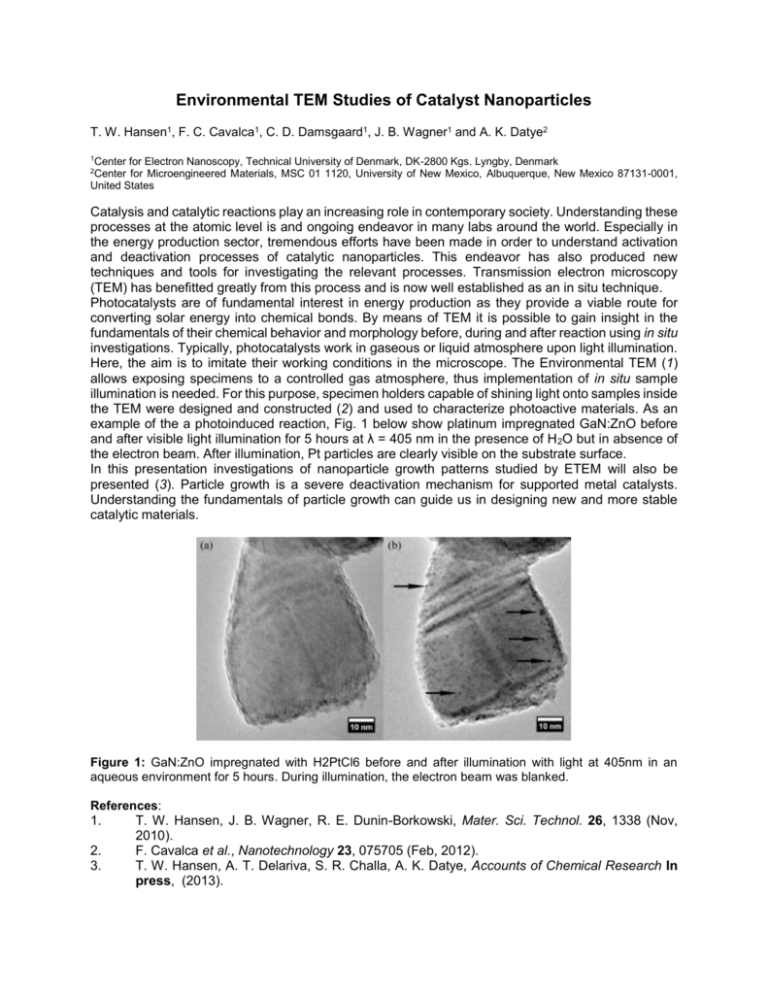
Environmental TEM Studies of Catalyst Nanoparticles T. W. Hansen1, F. C. Cavalca1, C. D. Damsgaard1, J. B. Wagner1 and A. K. Datye2 1 Center for Electron Nanoscopy, Technical University of Denmark, DK-2800 Kgs. Lyngby, Denmark Center for Microengineered Materials, MSC 01 1120, University of New Mexico, Albuquerque, New Mexico 87131-0001, United States 2 Catalysis and catalytic reactions play an increasing role in contemporary society. Understanding these processes at the atomic level is and ongoing endeavor in many labs around the world. Especially in the energy production sector, tremendous efforts have been made in order to understand activation and deactivation processes of catalytic nanoparticles. This endeavor has also produced new techniques and tools for investigating the relevant processes. Transmission electron microscopy (TEM) has benefitted greatly from this process and is now well established as an in situ technique. Photocatalysts are of fundamental interest in energy production as they provide a viable route for converting solar energy into chemical bonds. By means of TEM it is possible to gain insight in the fundamentals of their chemical behavior and morphology before, during and after reaction using in situ investigations. Typically, photocatalysts work in gaseous or liquid atmosphere upon light illumination. Here, the aim is to imitate their working conditions in the microscope. The Environmental TEM (1) allows exposing specimens to a controlled gas atmosphere, thus implementation of in situ sample illumination is needed. For this purpose, specimen holders capable of shining light onto samples inside the TEM were designed and constructed (2) and used to characterize photoactive materials. As an example of the a photoinduced reaction, Fig. 1 below show platinum impregnated GaN:ZnO before and after visible light illumination for 5 hours at λ = 405 nm in the presence of H 2O but in absence of the electron beam. After illumination, Pt particles are clearly visible on the substrate surface. In this presentation investigations of nanoparticle growth patterns studied by ETEM will also be presented (3). Particle growth is a severe deactivation mechanism for supported metal catalysts. Understanding the fundamentals of particle growth can guide us in designing new and more stable catalytic materials. Figure 1: GaN:ZnO impregnated with H2PtCl6 before and after illumination with light at 405nm in an aqueous environment for 5 hours. During illumination, the electron beam was blanked. References: 1. 2. 3. T. W. Hansen, J. B. Wagner, R. E. Dunin-Borkowski, Mater. Sci. Technol. 26, 1338 (Nov, 2010). F. Cavalca et al., Nanotechnology 23, 075705 (Feb, 2012). T. W. Hansen, A. T. Delariva, S. R. Challa, A. K. Datye, Accounts of Chemical Research In press, (2013).
